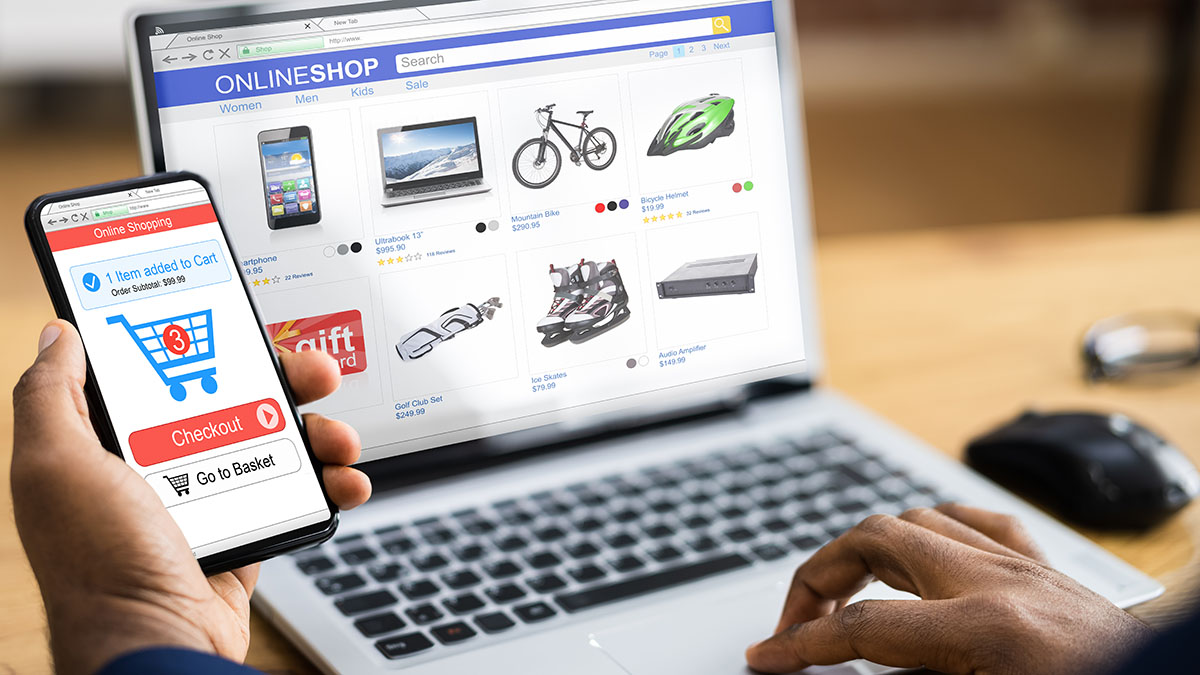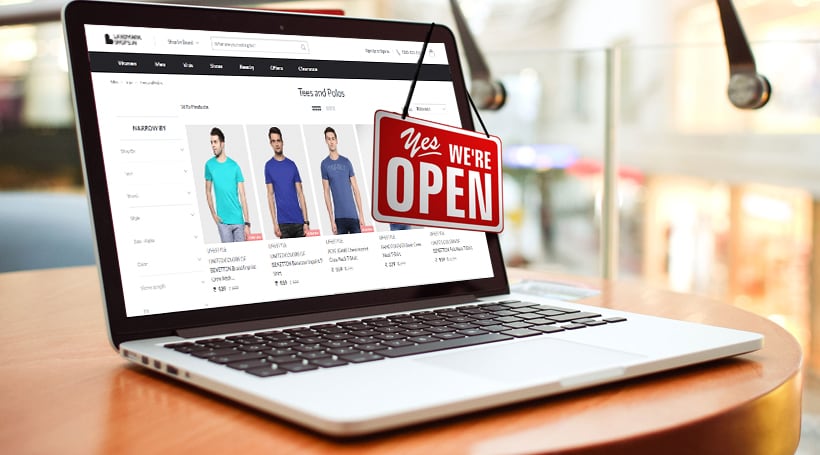
What Is E-Commerce? An Introduction to the E-Commerce Business Model.
The term online business was begat, harking back to the 1960s, with the ascent of electronic trade – the purchasing and selling of merchandise through the transmission of information – which was made conceivable by the presentation of the electronic information exchange. Quick forward fifty years and internet business has changed the manner by which society sells merchandise and enterprises.
Web based business has gotten quite possibly the most mainstream strategies for bringing in cash on the web and an appealing chance for financial backers. For those keen on purchasing an internet business, this article serves to give a prologue to web based business, covering the purposes behind its prevalence, the principle conveyance models and an examination of the significant web based business stages accessible.
On the off chance that you are keen on esteeming or selling a web based business, kindly investigate our How to Value and Sell and E-Commerce Business article.
What is ecommerce?
E-commerce, or electronic commerce, refers to transactions conducted via the internet. Every time individuals and companies are buying or selling products and services online they’re engaging in e-commerce. The term e-commerce also encompasses other activities including online auctions, internet banking, payment gateways, and online ticketing.
Why Do People Buy ‘Online’?

1- Lower Prices: Managing an online retail facade is far less expensive than a disconnected, physical store. Ordinarily less staff are needed to deal with an online shop as electronic administration frameworks empower proprietors to mechanize stock administration and warehousing isn’t really needed (as we examine later). Accordingly, internet business entrepreneurs can bear to give operational expense reserve funds to shoppers (as item or administration limits) while ensuring their general edge. Moreover, with the ascent of value examination sites, shoppers have more straightforwardness as to costs and can look around, normally buying from online outlets all things considered.
2- Availability and Convenience: Unlike numerous disconnected stores, shoppers can get to web based business sites 24 hours per day. Clients can find out about administrations, peruse items and spot orders at whatever point they wish. In that sense, internet shopping is amazingly advantageous and gives the purchaser more control. Moreover, those living in more far off zones can arrange from their home at a dash of a catch, saving them time traveling to a mall.
3- More extensive Choice: For as long as twenty years, the development of internet shopping has generally been based around expanded decision. With a practically unending selection of brands and items to browse, buyers are not restricted by the accessibility of explicit items in their neighborhood town, city or country. Things can be sourced and sent around the world. Curiously, one late examination found that buyers are really beginning to get disappointed by online business destinations that offer a lot decision. However you take a gander at it however, more decision has likely been something worth being thankful for over the long haul.
Naturally e-commerce has significant benefits for the consumer, but it has also been useful for businesses too. Next, we look at some of the reasons why businesses have been quick to race into the space.
Why Do Businesses Sell ‘Online’?

Higher Margins: Setup costs and continuous operational costs like lease, warming, power, warehousing (if working an outsource model) and stock administration are regularly fundamentally diminished or in any case killed. Further, client care and other authoritative errands can be computerized or reevaluated at a generally ease. All things considered, higher edges can ordinarily be accomplished when selling by means of an online store contrasted with working a disconnected business.
Adaptability: With a physical business, the proprietor is regularly restricted by the measure of individuals who can genuinely be in the store at any one time. There is no restriction when exchanging on the web. Maintaining an online business implies taking advantage of a really worldwide market. Moreover, online stages empower fast scaling. With the rise of web-based media and substance showcasing just as the alternative of producing traffic and changes through pay-per-click (PPC), venturing into new locales or markets can happen rapidly. An incredible illustration of this by and by is Choxi, a business that accomplished 1,023% development in income in only one year.
Purchaser Insight/Technology: E-trade organizations commonly group a gigantic measure of client information. With each component of shopper conduct being followed, web based business entrepreneurs can get, change and improve the client shopping experience for clients – settling on information drove choices to expand transformation rates and deals. With innovation quickly developing, it is significant that online retailers use devices, for example, Google Analytics accurately to comprehend their clients’ purchasing propensities, opening knowledge from this information presents an interesting benefit, not accessible to disconnected stores. The individuals who influence the correct frameworks and innovation can see their organizations develop very rapidly.
Having understood the benefits of running an e-commerce business, it’s time to turn attention towards the different types of e-commerce businesses available.
Overview of E-Commerce Fulfilment Models
Here are three main fulfilment models associated with e-commerce that dictate the role of the retailer as well as the way in which a product is stored and distributed to the end-user. These models have a significant impact on the operational characteristics of the business and its day-to-day running as well as the overall operating margin. The three main models are:
- Dropshipping Model
In a dropshipping model, the e-commerce business takes no physical possession of the items on sale. The store owner does not keep products in stock and there is no inventory held. Instead, orders are sent directly to the manufacturer, who is responsible for storing the items and shipping them to the customer. In this sense, the merchant never sees or touches the products, which has some unique advantages over adopting a more traditional order fulfilment model.
- Traditional Order Fulfilment Model
Buying wholesale is arguably closest to the traditional offline retail model. In effect, the business owner (retailer) acquires stock directly from a wholesaler at a discounted rate, applies a margin onto each product and decides to deliver to consumers directly.
- Outsourced Fulfilment Model
The retailer may wish to market products from a supplier that does not provide a dropshipping service. If the retailer wants to avoid end-to-end fulfilment (like the traditional model), then a hybrid approach can be adopted – using a ‘fulfilment house’. In this model, companies such as Shipwire are commissioned to handle the product side of the business, on behalf of the retailer. Generally, speaking, they are responsible for collecting products from the supplier, holding the product at their distribution centers, all packaging as well as onward order fulfilment (to the customer). This service comes at a cost – minimum fees, return fees and setup fees are commonplace and should be fully weighed up beforehand.
Overview of E-commerce Platforms

Having understood the main e-commerce models, it is important to spend some time considering the technology platform on which it operates. When analysing online businesses, the choice of platform is important; it will determine the basic customer experience, checkout process and the day-to-day management of orders etc.
To begin with, a decision needs to be made between a hosted or custom installation. Going down a ‘hosted’ route means that the hosting provider is responsible for maintenance of the hardware in their own data center. A custom installation will mean acquiring your own hardware. Both have practical implications for the owner, we have detailed some considerations below.
Key areas of focus should include:
- Pricing
- Platform Speed
- Storage Space
- Relative Cost of Templates
- Blog Functionality
- Shopping and Marketing Features
- Back-end and Security Features
- Help and Support
Having a broad idea of your requirements for each of the items listed above is an important aspect of deciding whether to re-platform. Platform choice will depend on the business in question and specific goals. It is worth spending some time detailing specific requirements out, in order to speed up the process.
Conclusion:
E-commerce has grown rapidly and changed significantly over the years, as such there is plenty for buyers, investors and entrepreneurs to be mindful of. Understanding different fulfilment models, as well as the pros and cons of different platforms, is critical when evaluating potential e-commerce businesses for sale.